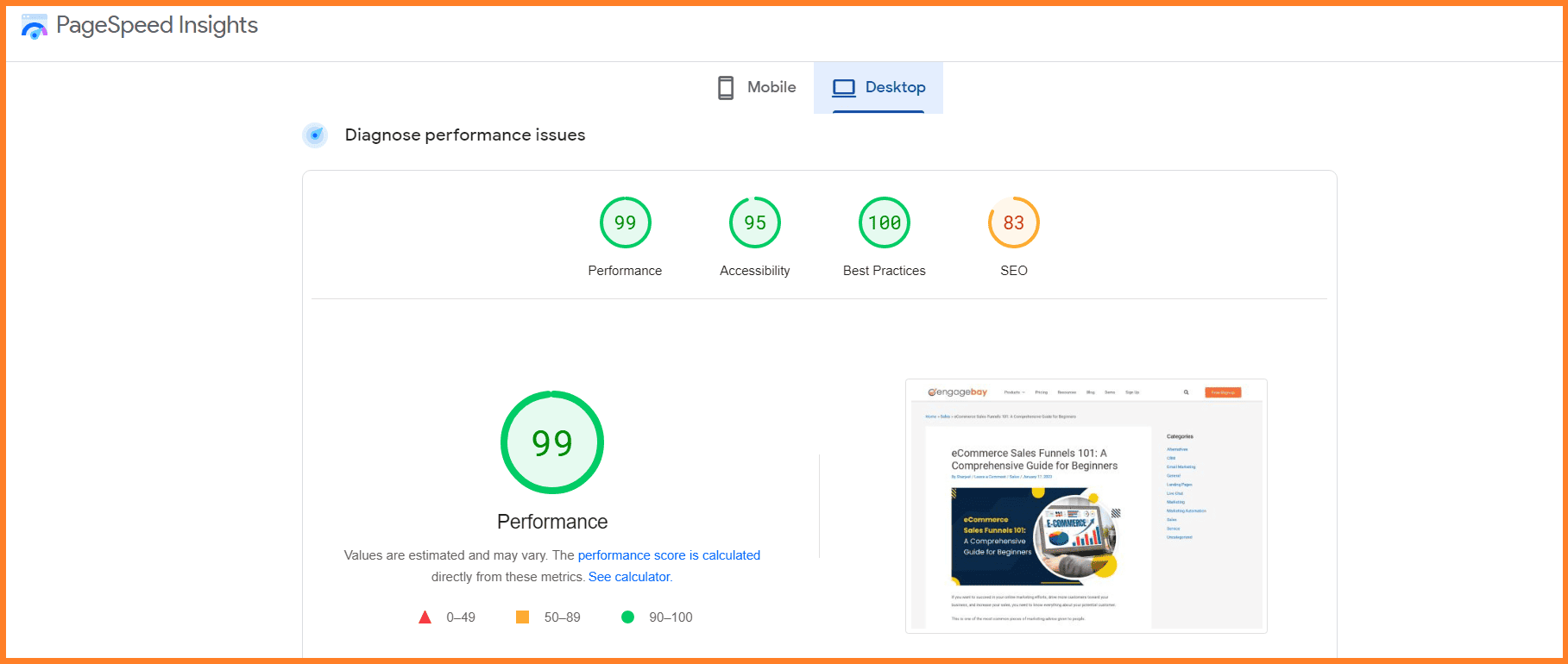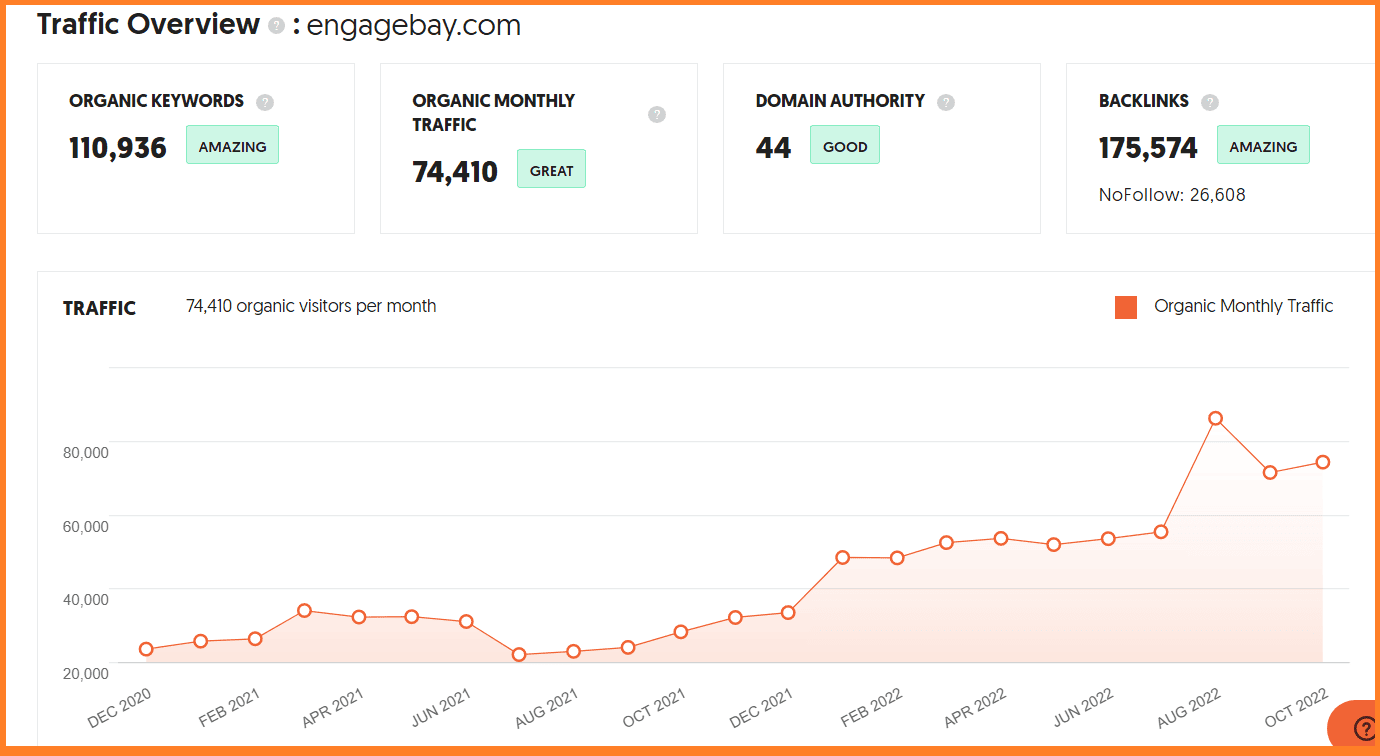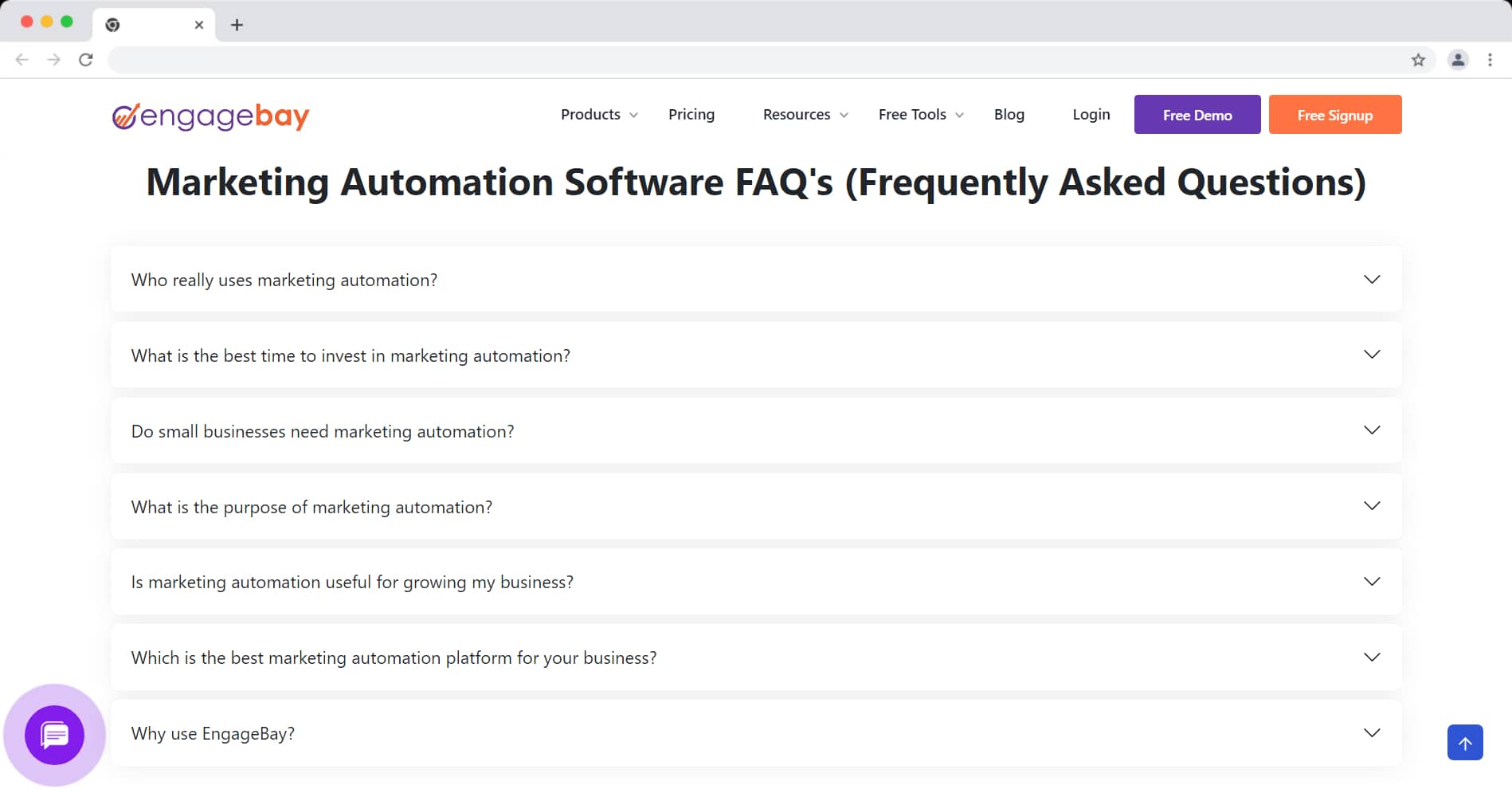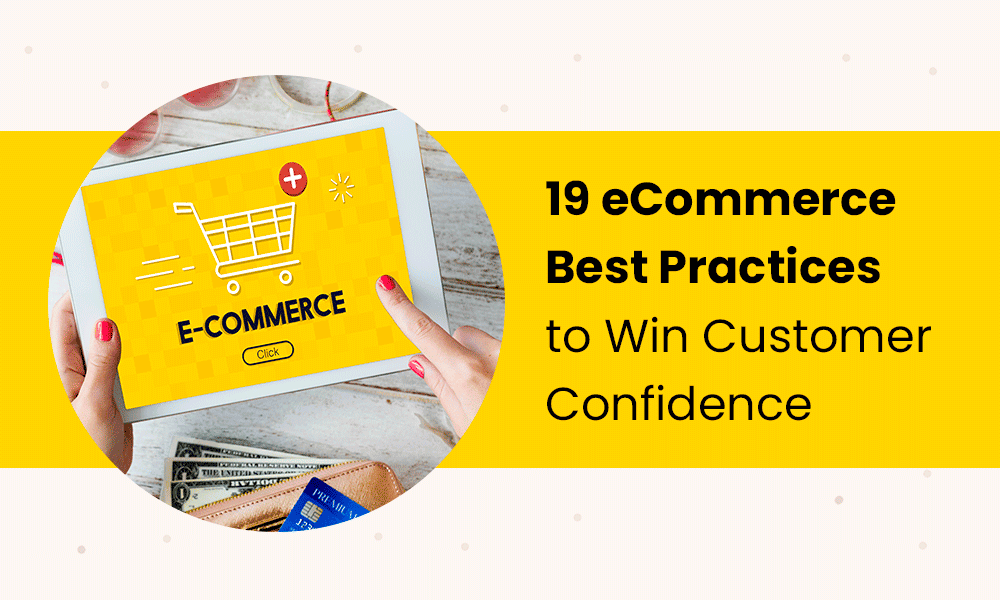Can you believe that 2024 is already upon us? If one of your goals this year is to create or build upon an existing eCommerce store, you might need some best practices to help you get started.
Well, you’ve come to the right place!
In today’s blog post, we’ve compiled 19 of the top can’t-miss eCommerce best practices, tips, and strategies to help your eCommerce business fly into the stratosphere!
Table of Contents
1. Work on Your On-Page SEO
On-page or on-site SEO refers to optimizing your website elements to boost your SEO rankings. While on-site SEO may be a small part of your overarching SEO strategy for 2024, it’s a great place to start.
So how do you fix your on-page SEO? Here are some areas to improve on.
Optimize your website for mobile users
According to Statista, in the second quarter of 2022, 58.99% of Internet traffic worldwide came from mobile devices. The rate of mobile use has been around 50%, the site notes, since about 2017, and has at times surpassed it.
If your website isn’t mobile-optimized, you’re missing out on at least half of a viable audience. That’s a huge percentage of people to leave behind!
Add more images
Images are helpful on any website for breaking up large blocks of content, adding relevancy and context to your message, and making copy look more visually interesting.
Unique images are best, so if you have original photos or screenshots of a product, upload these first. You can also use stock images, but please pay for the license, so your photos aren’t watermarked.
When you upload images and other multimedia, such as video, be sure to use alt tags. These tags provide descriptive information (that you have to write) on the visual content you’re sharing, and hence help Google understand what they’re about.
Read also: The Best CMS for eCommerce
Improve your site loading times
Fast sites are good sites in the figurative eyes of the SEO algorithm. If you haven’t tested the loading speed of your eCommerce website lately, now is as good a time as ever to do so.

If your site loads slowly, you can follow these strategies to speed it up:
- Use less HTML, JavaScript, and CSS
- Turn on browser caching and begin caching webpages too
- Minimize redirects as much as possible
- Compress images
Map your internal links smartly
Internal links are those that connect to various parts of your website. It’s not only your users who will appreciate having access to internal links but search engines as well, as you create a “path” for navigation.
Read also: The Beginner’s Guide to eCommerce Marketing Automation
Work on keyword optimization of all your content
Are you using keywords when producing content for your eCommerce site? Hopefully, the answer is a resounding yes!
Currently, it’s all about long-tail keywords, which are lengthier, more specific keyword search phrases that increase your conversion value.
Using keywords just the right amount is a best practice that will take your eCommerce site far. You want to sprinkle in keywords naturally, not stuff them into every few sentences. That can get you penalized by the algorithm!
There are plenty of tools to help you optimize your content for the right keywords — from popular and expensive ones like Ahrefs and Semrush to newer, more affordable tools like UberSuggest, Answer The Public, and ContentPace.
2. Provide More Useful Information on the Homepage
What kind of information is on your eCommerce homepage?
A homepage is not an about page, so there’s no need to delve into your company history, your founder’s background, or anything of the sort.
This is the year you should refocus the aim of your homepage. The new goal should be assisting your users and customers in discovery.
Perhaps that’s the discovery of your brand or your products, but you need to give your audience more of what they need.
Once you institute an eCommerce best practice like this, you should see an influx of traffic and even more conversions.
Read also: 14 Stunning eCommerce Landing Page Examples (With Expert Tips)
3. Only Post High-Quality Videos and Photos
Although compressing your multimedia is wise from an on-page SEO standpoint, image and video compression is no excuse for poor-quality multimedia.
When you post your product photos, your customers want to see every fine detail. Perhaps your images have a zoom feature so customers can look as up-close as they want, but the quality should never be grainy, pixel-y, or otherwise lacking.
A compressed high-quality image is still high-quality; it’s just reduced in quality.
Did you record a video introducing your new product or a step-by-step tutorial with instructions on the product’s usage? The quality of the video has to be clear as well.
In 2023, 1080 quality, which is full HD (1920 by 1080 pixels) isn’t the best quality by far, but it is the standard — don’t go below that. You won’t exceed your website server storage space and can still share crisp HD videos.
Read also: 12 eCommerce Analytics Tools for Pro-Level Business Tracking
4. Use Elements Like Scarcity and Urgency
As your eCommerce site is up and running long enough, you’ll get a feel for how your customers move through the sales funnel. If you notice that they linger in the middle of the funnel quite frequently and that it takes them forever to make a purchasing decision, you don’t have to watch idly.
Introducing elements such as scarcity and urgency can inspire faster decision-making than what your leads and customers have abided by so far.
Scarcity marketing uses the scarcity principle. In other words, when something is less widely available, even if its value wasn’t high before, now its value increases.
You might introduce a limited-edition version of an existing product and compare the sales for the limited version versus the regular one.
You can also limit the stock you have on products on your eCommerce store or roll out a very short-term sale.
Scarcity and urgency often go hand-in-hand, but you can also drive up the urgency of purchasing your new product separately.
First, we recommend rewriting your landing page copy to introduce that sense of FOMO. Share sales numbers (but don’t exaggerate) to prove that everyone wants this product. You can also discuss how limited stock is available.
If your customers still aren’t biting, introducing an additional incentive should inspire them to part with their hard-earned money finally.
Read also: 8 Fantastic eCommerce Marketing Strategies For Success
5. Introduce a Content Taxonomy System
Does your website use content taxonomy? If not, then 2024 should be the year that changes, as this is the next on our list of eCommerce best practices for better customer confidence.
So what is a content taxonomy, you ask? It’s a means of classifying and organizing content so it’s easily searchable.
For instance, you might introduce existing content into carefully labeled folders, create a titling system, and tag your content.
Organized content is more discoverable internally (for you) and externally for your leads and customers.
To simplify content taxonomy, think of it just the same as your product taxonomy. The same logic should get you to the best mapping system for your content.

6. Add Visual Product Previews
Have you ever wondered why cereal boxes, hair care products, and other consumer goods produce flashy product images on the package or box?
That’s because product visuals are powerful stuff!
Whether your consumers shop in a store or online, they like to see what they’re getting.
Visual product previews fulfill that need.
8 Best Email Marketing Software for eCommerce in 2024
7. Make Profile Creation Optional (But Encourage It!)
If you’re having a hard time getting customers through your eCommerce sales funnel, one of the stumbling blocks that’s worth evaluating is whether it’s too difficult to check out.
When you require customers to make a profile just to purchase a product, many might not be willing to go that far. They don’t want to join an email list or share their contact information with your eCommerce brand quite yet, and perhaps not ever.
There’s a reason why guest profiles are on the rise these days. By allowing a customer to bypass profile creation, they can check out at a level of comfort that’s suitable for them.
Guest profiles are hard to track, so ultimately, you’d prefer your customers to create a longer-term profile. How do you inspire them to do that?
Good timing helps. Now that the urgency of making a purchase is no longer on their shoulders, a post-purchase email inviting your customers to create a profile might be received better.
You can sweeten the deal by offering only some features on verified user accounts versus guest logins, such as order tracking.
Read also: 8 Game-Changing eCommerce Integrations For 4X Growth
8. Send an Email After Shopping Cart Abandonment
Research resource Baymard Institute states that 2023’s cart abandonment rate sits at 69.99%, which is quite high!
You have to expect that even if you nurture and engage with your audience, a good number of them will change their minds about their purchase at the last possible second – with the item in their cart.
What is your eCommerce brand doing to combat shopping cart abandonment? Do you just let it happen? You need to begin sending emails to win back this would-be customer.
Your email should be friendly and never pushy. Remind your lead what they missed out on. You can also inspire them to finish the purchase with an exclusive discount code that’s only good for the next 12 or 24 hours.
Examples and Strategies to Nail Your eCommerce Cart Abandonment Emails
9. Keep Your Blog Up-to-date
As an eCommerce brand, it’s easy to let your products do all the talking, but you must also have a blog.
Blogs are highly advantageous for any company, from those in their starting stages to bigger brands. A blog can increase your traffic and conversion rate, provide content for posting on social media, boost your SEO through link-building, and strengthen your brand.
It’s not enough to start a blog, write three posts, and then abandon it. You also can’t write on your blog once in a blue moon. One of the top eCommerce best practices we have for you is to post on your blog regularly.
How regularly is regular enough? The answer to that question seems to change from year to year, doesn’t it?
The answer for 2024 is as often as you can. At the very least, you should plan to post once weekly, but publishing blog content upward of four times a week is better.
The AI writing company GrowthBar noted that publishing fresh blog content at least 15 times a month can boost organic traffic. You’ll see four times more traffic than a blog with one or two new posts a month.
How do you determine what to write about that often? You have to do keyword research to find the kind of content your audience is looking for more information about.
If the topic has been covered, you must put your own unique spin on it. Rewriting and rewording what already exists out there will not help you achieve any of the benefits of blogging!
To share our own example, we at EngageBay have been able to generate excellent organic traffic because we’ve consistently published new blog posts.

See?
15 Easy Steps to Build a Personalized eCommerce Marketing Plan
10. Increase Your Email Subscribers
How many email subscribers does your eCommerce brand have? No matter how you answered, be that in the hundreds, the thousands, the tens of thousands, or even the millions, we’re sure you’re always eager to have more subscribers.
Honing in on eCommerce best practices in 2024 could be just the way to do it.
Here are some of our most tried and true email marketing methods for seeing more subscribers on your email list 👇🏻
A/B test your CTA buttons
Do your CTA buttons need a revamp? Use A/B testing to be sure.
Test all the elements of your CTA buttons, from the text within the button to the placement of the button to its color and shape.
Once you know what will perform best with your audience, update the CTA buttons across your eCommerce website.
👉Overstocking and understocking can have terrible consequences. Understand these dynamics in depth from our blog post here.
Make valuable lead magnets
The quality of your lead magnets is a huge determining factor in whether your email subscriber list will grow or stagnate.
Since the year has just begun, it’s an optimal time to reevaluate the quality of your lead magnets.
Have you pivoted to a new audience, and the content in the lead magnet no longer gels? Is the content older, and could it be more up-to-date? Is it not your most valuable content anymore?
If you answered “yes” to any of those questions, then update your lead magnets. Once you have more valuable content to share, you should naturally see an influx in email subscribers.
Read also: Innovate or Stagnate: Bold eCommerce Advertising Strategies for Growth
Add more opt-ins
Who says one opt-in is enough? We’re not suggesting you go overboard, of course, but you might as well add a second opt-in form or pop-up at the end of your blog content.
The more opportunities you give your audience to opt in, the greater the chances that they will.
Read also: Master the Art of eCommerce Analytics with These 16 KPIs
Host a contest
When all else fails, you can always rely on contests to balloon your email subscribers.
Keep the contest rules simple, requiring only an email address for a participant to enter. The prize should be something your audience truly wants. While you can’t go wrong with a cash prize, perhaps you give away your newest product.
No matter which of these tactics you choose for increasing the size of your email list, building an email list is one thing, and maintaining it is another.
Plan to use email automation and audience segmentation to send out relevant email content no matter which stage of the funnel a lead or customer is in.
Read also: eCommerce Sales Funnels 101: A Beginner’s Guide
11. Add More Payment Options
The way the average person purchases goods and services today is more varied than ever before.
Most customers still prefer typing in their debit or credit card numbers despite the risk posed by cyberhackers. Of course, quite a number of them use security tools like a VPN, antivirus, or both to minimize these threats.
However, to get the best level of protection, you need to use an antivirus and a VPN at the same time. On the other hand, some save themselves the trouble and use third-party payment options like PayPal or Apple Pay to prevent credit card fraud.
Then there’s the growing cryptocurrency crowd. Supporting cryptocurrency payments and decentralized finance (DeFi) can appeal to customers who value the transparency, security, and accessibility offered by blockchain technology, compared to traditional finance.
One thing to keep in mind while allowing crypto-based payment is how the taxation on crypto works in various countries. For example, if your website is functional in India and you allow crypto-based payments, you have to abide by the crypto tax laws in India. Inform the same to your consumers as well.
The more payment options your eCommerce store supports, the better. When your customers can check out using their preferred payment method, they have one less impediment to purchasing your products.
Read also: eCommerce Customer Expectations: The Science of Delight
12. Rework Product Demos for Better Engagement
Product demonstrations can be the selling point for a product. Bearing that in mind, it’s time to be honest with yourself. Just how engaging are your current product demos?
Do you or the video host drone on for too long? A bloated video is daunting to watch, and it takes up a lot of hosting space on your site that could bog down its loading speed.
Besides getting too long-winded, watch your language. Demonstrating your product using too much jargon can cause people to exit your video and your website altogether. That’s also true if you skip over important parts of the product or if your video demo is poor quality.
It might not be a bad idea to take a few hours and re-shoot all your current product demos. Begin holding your future demos to higher standards as well so you can save yourself the rerecording work later!
Read also: 17 Fab Ideas for eCommerce Business in 2024
13. Rethink Your eCommerce Website Hosting
The new year is always a time for reflection. As you mull over these eCommerce best practices, you might want to reconsider the various moving parts of your website.
For instance, perhaps it’s time to change your website host. You might have selected your host when your eCommerce website was teeny-tiny, but now that it’s grown, you feel like you need a better, more encompassing host.
If you’re looking for a host that can handle the demands of a larger eCommerce site, consider upgrading to enterprise WordPress hosting. With its advanced features and scalability, it can provide the performance and reliability you need to support your growing business.
Maybe you didn’t put much thought or consideration into the web host you selected when you did it. If so, that’s another situation in which reevaluating is completely warranted.
👉Ignite your ecommerce marketing with creative ideas – explore our comprehensive guide now! 🌟
14. Write or Rewrite Your FAQs
Does your website have an FAQs section? If it doesn’t, then your next order of business is to make one.
An existing FAQs section can and should be expanded upon. You want to include a range of questions covering the needs and interests of first-time and long-time customers.
No customer wants to send an email or pick up the phone and call your eCommerce company when they can find what they need within your knowledge database. They save more time this way.
With robust FAQs, you’ll certainly win more customer confidence this year!
Here’s one example from our website 👇🏻

15. Use Search Auto-Complete
We have already established that more than 50% of online searches happen on mobile devices like smartphones or tablets. Typing on these devices may be the norm, but let’s be real, it’s not exactly the most convenient thing.
Do you know what is a lot more convenient? Search auto-complete!
Predictive search that can assume what a customer will look for without having to type the word out saves time and puts the user’s shopping experience off to a great start.
The 5 Best eCommerce Platforms for Startups
16. Make Your Search Bar More Visible
Site search resource AddSearch reported in 2020 that 30% of site visitors would use a search bar if you provide it. The site’s data also reported that your conversion rate is 1.8 times higher with site search.
Those stats alone should tell you that whatever you need to do to make your search bar more navigation-friendly is worth doing. Put it above the fold or add it to a traveling navigation bar.
Be sure to use A/B testing to confirm the new search bar is what your audience wants to see as part of your broader website design.
👉Boost your ecommerce success with the ultimate marketing automation strategies – dive into our in-depth guide today! 🚀
Read also: eCommerce In-house Support: Pros and Cons Explained
17. Go Ad-Free
Advertisements on your eCommerce store are a great revenue stream, as you can work with other storeowners or third parties to host ads on your platform.
We’re not saying you should never explore this option, but it’s better to get rid of ads in the interim. After all, strange ads don’t exactly boost customer confidence.
What about AdBlocker, we’re sure you’re saying? It’s an option for desktop users, but for your mobile crowd, it isn’t. Forego the ads for now and gradually introduce advertisements once your eCommerce site is a trusted resource.
Read also: 6 High-Impact eCommerce Marketing Strategies to Try Now
18. Reduce the Number of Form Fields at Checkout
Earlier, we discussed how your eCommerce site should embrace guest accounts to streamline the checkout process. In that same vein, reducing the required form fields will expedite checkout.
Give customers the option to check a box that fills in their details for their billing address if it’s the same as their shipping address, so they don’t have to type in all that information twice. Remove extraneous form fields too.
You already know what will happen when your customers get tired of checking out because it’s grown too tedious. They’ll abandon their cart. Even a sweet discount code might not be enough to win them back.
Read also: The Beginner’s Guide To ECommerce Support Outsourcing
19. Use an AI-Powered Chatbot
The rise of the Internet has changed customer expectations of businesses. You should still be online even when your brick-and-mortar store is closed (provided you have a brick-and-mortar store in the first place).
To meet consumer demand, use chatbots. AI continues to make chatbots smarter all the time. A bot can’t possibly answer every question a consumer has, but for basic questions, they can provide information that tides over a customer when you’re at home sleeping, eating, or living your life.
25 eCommerce Tools to Boost Sales in 2024
Conclusion
There you go — 19 exceptional eCommerce best practices designed to drive up customer trust and confidence.
It’s never too late to make your business dreams come true. Good luck!
And remember, if you need a marketing automation tool for your eCommerce store, there’s nothing as affordable and seamless as EngageBay. Try it for free today.


